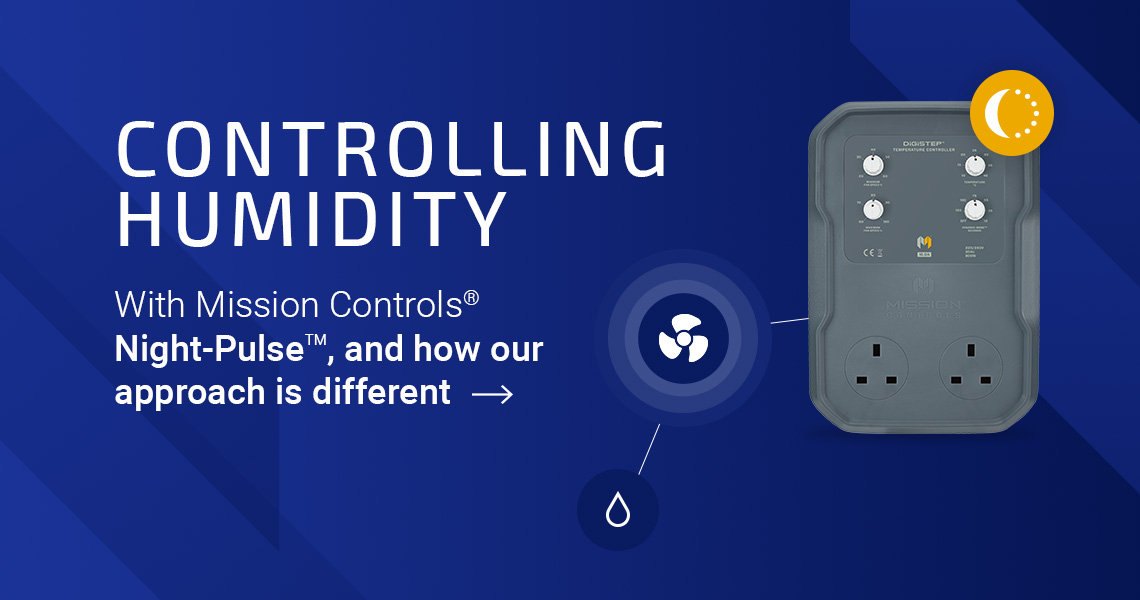CONTROLLING HUMIDITY WITH MISSION CONTROLS®

Controlling Humidity with Mission Controls Night-Pulse, and how our approach is different
Many temperature controllers also employ the use of a humidity sensor, which regulates fan speeds depending on the humidity value in the room. Mission Controls® do not employ this technique for several reasons.
Consistent humidity
Plants like consistent, stable growing conditions, without great swings in either temperature, co2 or humidity. Any system that interrupts the airflow by either slowing fans down or speeding them up to control humidity, will ultimately create swings in temperature, or vice versa. For example, if the temperature is lower than the set point, but the humidity is higher, the controller needs to slow fans to raise temperature but speed them up to lower humidity. Either way, the controller works against itself, and conditions fluctuate.
A balanced airflow is key
Plants enjoy good humidity, and if it wasn’t for the risk of moulds inside dense fruit sets towards the later stages of flowering, plants would grow better if kept upwards of 50% throughout, so there’s nothing to be gained by lowering humidity when lights are on and in the early stages of growth. Whilst lights are on and ventilation is high, our system provides a consistent and balanced airflow which in turn provides consistent temperature co2 and humidity.
Our system provides a consistent and balanced airflow which in turn provides consistent temperature co2 and humidity
Problems are most likely to occur when lights switch off, temperatures cool, and ventilation slows down. This causes peeks in humidity. To combat this, Mission Controls developed Night-Pulse™ a system that when activated allows the room to ‘breath’ at night by providing a short, gentle pulse of airflow at strategic points during the dark cycle. This system allows for consistent daytime conditions, whilst keeping the air fresh and maintaining a healthy growing environment after the lights have switched off.